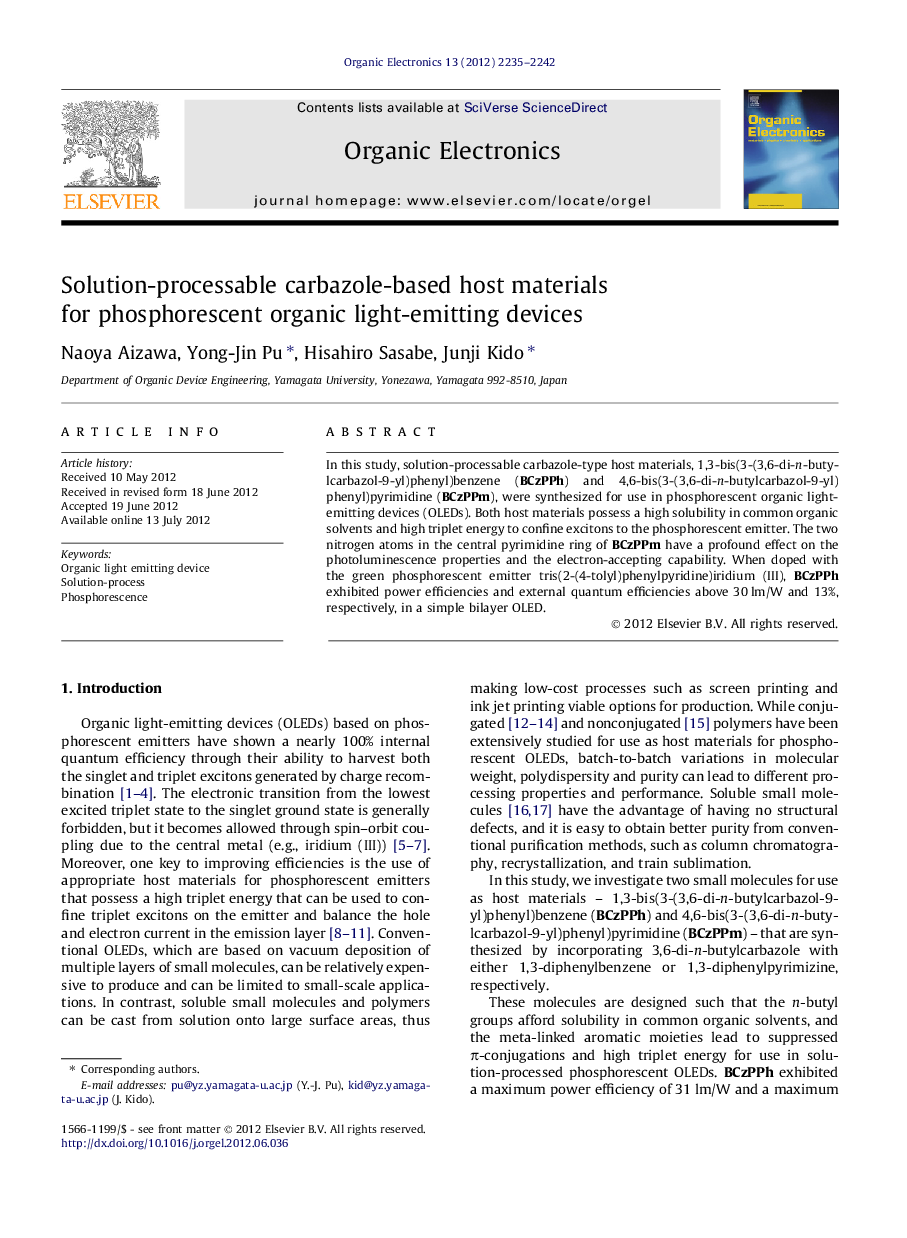| Article ID | Journal | Published Year | Pages | File Type |
|---|---|---|---|---|
| 1263993 | Organic Electronics | 2012 | 8 Pages |
In this study, solution-processable carbazole-type host materials, 1,3-bis(3-(3,6-di-n-butylcarbazol-9-yl)phenyl)benzene (BCzPPh) and 4,6-bis(3-(3,6-di-n-butylcarbazol-9-yl)phenyl)pyrimidine (BCzPPm), were synthesized for use in phosphorescent organic light-emitting devices (OLEDs). Both host materials possess a high solubility in common organic solvents and high triplet energy to confine excitons to the phosphorescent emitter. The two nitrogen atoms in the central pyrimidine ring of BCzPPm have a profound effect on the photoluminescence properties and the electron-accepting capability. When doped with the green phosphorescent emitter tris(2-(4-tolyl)phenylpyridine)iridium (III), BCzPPh exhibited power efficiencies and external quantum efficiencies above 30 lm/W and 13%, respectively, in a simple bilayer OLED.
Graphical abstractFigure optionsDownload full-size imageDownload as PowerPoint slideHighlights► The carbazole hosts showed a high triplet energy to confine triplet excitons. ► The pyrimidine ring gave the electron-accepting capability to the compound. ► The power efficiencies were higher than 30 lm/W in a simple bilayer OLED.
